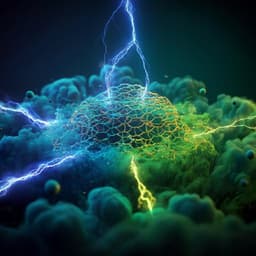
Chemistry
Regulation of functional groups on graphene quantum dots directs selective CO2 to CH4 conversion
T. Zhang, W. Li, et al.
This groundbreaking research, conducted by Tianyu Zhang and colleagues, reveals how functionalized graphene quantum dots can efficiently steer CO2 electroreduction towards high selectivity for CH4 production. Their innovative approach enhances methane yield significantly, promising to reshape catalyst design for sustainable chemical synthesis.
~3 min • Beginner • English
Related Publications
Explore these studies to deepen your understanding of the subject.







